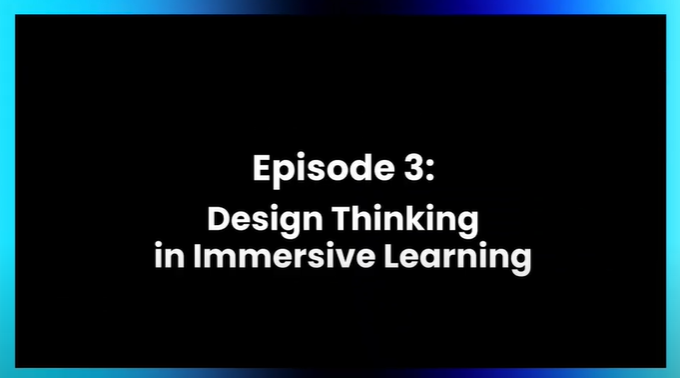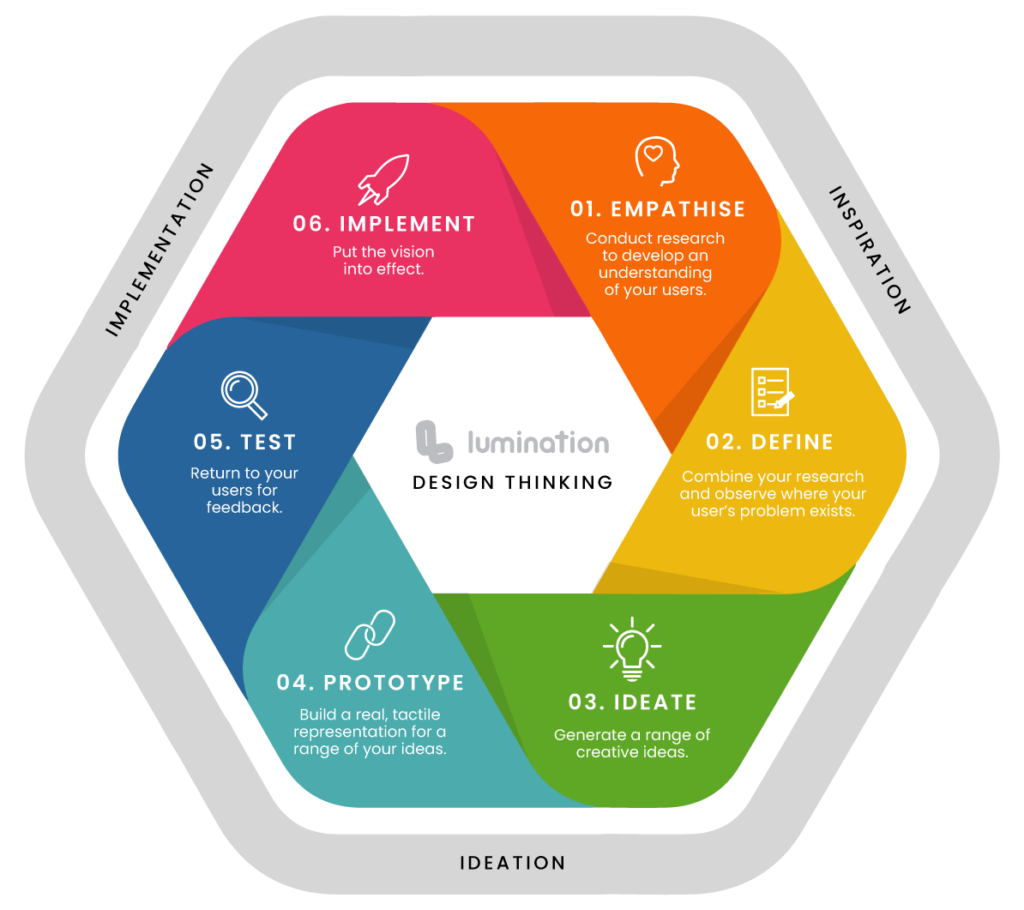Unit B: Design Thinking

In this unit, we will be looking at the “What” of Immersive Learning: Design Thinking.
Watch the video below and respond to the task, then you can mark this unit as ‘Completed’.
(Video Duration: 4 mins 45 secs)
Pre-Intro:
When students are presented with real world problems in the classroom, learning becomes more engaging and meaningful. They can harness their critical, creative, and systems thinking skills while trying to analyse and consider possible solutions to these problems. So, what’s a great way to help them to navigate through these learning experiences? Let’s talk about Design Thinking for immersive learning.
[Series Title Animation]
Intro:
Welcome to ImmersEDU! I’m Shai Coggins, an immersive learning specialist, and Learning Design Lead at Lumination.
In this episode, we’re focussing on design thinking. Design thinking has been around since the 1950s and 60s. However, this framework has gained traction over the past 10-20 years as a human-centred approach to problem solving. In fact, it’s part of the Australian Curriculum’s core concepts in Technologies. But, technology isn’t the only learning area where you can use Design Thinking. You can actually use this framework for pretty much any subject across the curriculum.
There are many models of Design Thinking out there, and here’s the one that we use at Lumination:

Let’s look at the three main areas: Inspiration, Ideation and Implementation.
To inspire students, we start by having them empathise with the problem. This could be anything from looking at sustainability issues to designing an invention or innovation. From an immersive learning perspective, this stage is a great way to incorporate Exten ded Reality (XR) technologies like Virtual or Augmented Reality. So, if you want students to design a waste management system, for example, you can get them to go through immersive experiences that give them a better understanding of waste issues. Using our our Lumination Learning Labs and VR/AR Education Kits, teachers can take students to VR tours of landfills or even get them to experience what it’s like to physically sort rubbish in a recycling facility.
Once your students are able to empathise with the issue at hand, they can define the problem that they want to solve. Referring back to our waste management example, teachers can ask the students — What is the problem that they’re trying to solve? Are they able to come up with a better way to recycle? Or, maybe, a new way to package goods to avoid waste?
Once your students have defined their problem, the ideation stage begins. We always tell our students, in order to get a great idea, you need to start with more than one. So, if they’re eager to find a better way to recycle, they can list as many solutions as possible to that problem.
Next, they can choose one of those ideas to work with and come up with a prototype. Rapid prototyping is an essential part of the Design Thinking process. In traditional prototyping, students might use materials like cardboard, paper, and craft sticks, that are not great for sustainability. But with VR and AR, students can create their prototypes using digital tools and make them more interactive and engaging.
In the testing stage of this framework, students share their solutions with teachers and peers and go through a feedback process to see what they did well and what they can improve upon. This is a great way to get students applying critical thinking skills as they learn to give and receive feedback.
Finally, in the implementation stage, they bring their solution to life, creating a version of their prototype using 3D printing, immersive VR, or perhaps, presenting their ideas during a showcase or event. Some students can even bring their design solutions to market.
Expound:
That’s why the Design Thinking framework is a fantastic way to get students to develop vital skills like creativity, critical thinking, problem solving, and collaboration. It teaches students the importance of process, not just product. And, when you use immersive learning as part of Design Thinking, the experience can be made even richer.
A recent pilot project I’ve completed revealed that students showed a 12% increase in empathy scores with the use of VR. Many teachers we support also report high engagement in the classroom when using immersive technologies in our Lumination Learning Labs.
Outro:
You can learn more about design thinking and how it’s used with immersive technologies by visiting lumination.com.au and drop us a message. Someone from our team would be happy to speak with you about our product offerings to help you to get started at your school.
Before you go, don’t forget to like this video and subscribe to our channel. See you again next time on ImmersEDU!
This Design Thinking model shows where we see XR Technologies fit within the framework:


